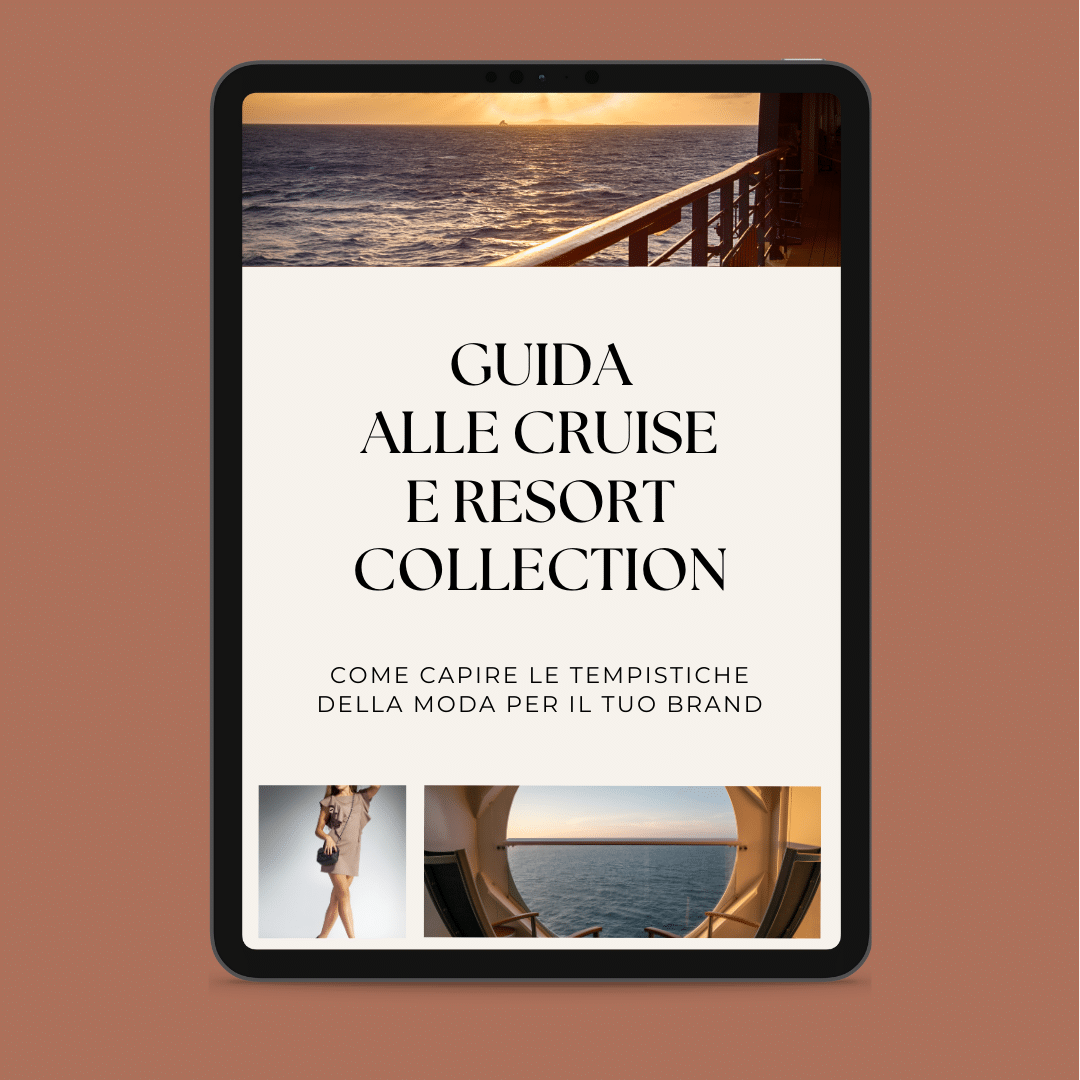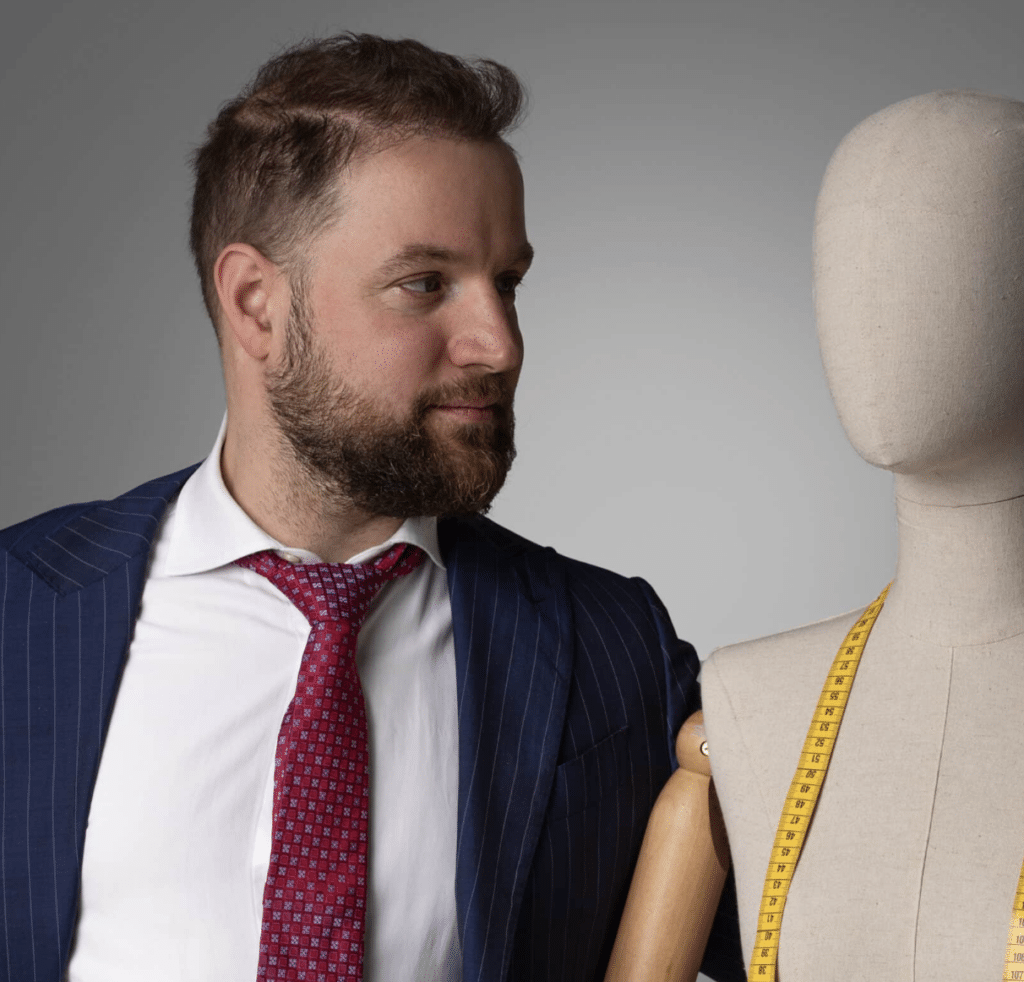Table of Contents
A New Rhythm in the Fashion Calendar: The Rise of Pre-Collections
In the world of fashion, novelty is synonymous with existence.
One of the most significant transformations recently has been the evolution of the 'fashion calendar'. If in the past it was sufficient for a brand to present two 'fashion collections' per yearfor the spring/summer and autumn/winter seasons, the current frenetic pace of the fashion industry has swept away this established norm.
Today, fashion houses respond to an insatiable thirst for novelty by introducing a series of 'pre-collections' throughout the year.
With intriguing names such as "Resort', 'Cruise', 'Pre-Fall' e 'Pre-Spring'these additional collections act as appetiser for the main seasons fuelling new fashion trendsensuring that the public's attention remains high at all times.
While the sharpest fashion observers have quickly adapted their vocabulary and expectations to these new listings in the fashion calendar, many may still wonder what exactly these pre-collections are and why they have become so important.
So, let us take a moment to unravel the mystery of these intermediate collections and to understand how they have reformed the rhythm of the fashion calendar. In this article I will take you on a journey of discovery of the new collections in the brand calendar!

SUBSCRIBE TO THE NEWSLETTER AND DOWNLOAD FOR FREE:
THE BE A DESIGNER PORTFOLIO OF OUR LATEST PROJECTS RESORTWEAR
Click on the button below
and follow the instructions:
Defining Pre-Collections in the Modern Fashion World
Pre-collections, which include Resort, Cruise, Pre-Fall and Pre-Spring, have assumed a significant role in the contemporary fashion calendar. But what are they really and why are they so important?
Resort collections, also known as Cruise or Pre-Spring, are inter-seasonal fashion lines that are launched after autumn/winter and before the spring/summer collection is delivered to the shops. These collections tend to offer a range of clothes suitable for both cold and warm weatherthus covering the needs of a global audience.
The Pre-Fall collection, on the other hand, is launched before the autumn/winter collection. Like the Resort, the Pre-Fall has become a stable element in the fashion calendar, often presenting more restrained pieces compared to the vibrancy of the Resort collections, mainly to meet commercial demands.
Both the Resort and Pre-Fall collections were initially understood as "seasonal 'fillersproviding customers with new clothes to buy while waiting for the main collections spring/summer and autumn/winter.
However, as the fashion world has evolved, these pre-collections have grown in importance, becoming a platform for brands to showcase their creativity and innovation, as well as becoming an important pillar in their annual turnover.
To sum up, pre-collections in the modern fashion world are more than just 'filler' collections. They play a fundamental role in keeping consumers' attention all year round, enabling brands to respond quickly to emerging trends and remain relevanti in an increasingly fast-paced and competitive fashion market.

Meaning of Resort, Cruise and Pre-Spring: Details and Proposals
Collections Resort, Cruise and Pre-Spring, although they have different names, they are essentially synonymous. These collections are generally launched in May, kicking off the inter-seasonal fashion show season.
Their catchy names are a hint of their original function:
They were collections designed specifically for those who went on their 'luxury' holidays, offering light and fluttery garments, swimming costumes, huge hats and other travel garments.
However, in the modern fashion world, their meaning is much broader. Now, theand Resort, Cruise and Pre-Spring collections are seen as an opportunity for designers to express their creativity without the limitations of seasonal collections.
These collections tend to be bolder and more experimental, giving creative directors the opportunity to experiment with new styles and themes.
Moreover, they are no longer limited to summer clichés. Designers now include a wide range of garments, including heavier coats and dresses, to meet the needs of a globalised clientele living in different climates.
These collections are on sale starting in November, remaining available until Christmas.

SUBSCRIBE TO THE NEWSLETTER AND DOWNLOAD FOR FREE:
THE BE A DESIGNER PORTFOLIO OF OUR LATEST PROJECTS RESORTWEAR
Click on the button below
and follow the instructions:
Meaning of Pre-Fall: Commercial Motivations and Impact
The collection Pre-Fall is another important component of the fashion calendar. Similar to the Resort collections, thea Pre-Fall is launched before the main autumn/winter collection. Unlike the Resort collections, however, Pre-Fall is generally more restrained and commercially oriented.
Pre-Fall responds to the need for brands to maintaining customer interest during the transition period between seasons. It also offers brands the opportunity to increase their profits by providing customers with new garments to buy while the autumn/winter collections are still in production.
In fact, Pre-Fall is considered an important source of income for fashion brands. Even if spring garments are often on sale and autumn garments are not yet on consignment, the Pre-Fall collection provides customers with a range of new garments to buythus supporting the brands' sales during this transition period.
In short, while the Resort, Cruise and Pre-Spring collections are seen as a vehicle for creative expression and innovation, the Pre-Fall collection is more focused on the commercial reality of fashion. Both types of pre-collections play a key role in maintaining customer interest and supporting the financial stability of brands throughout the year.
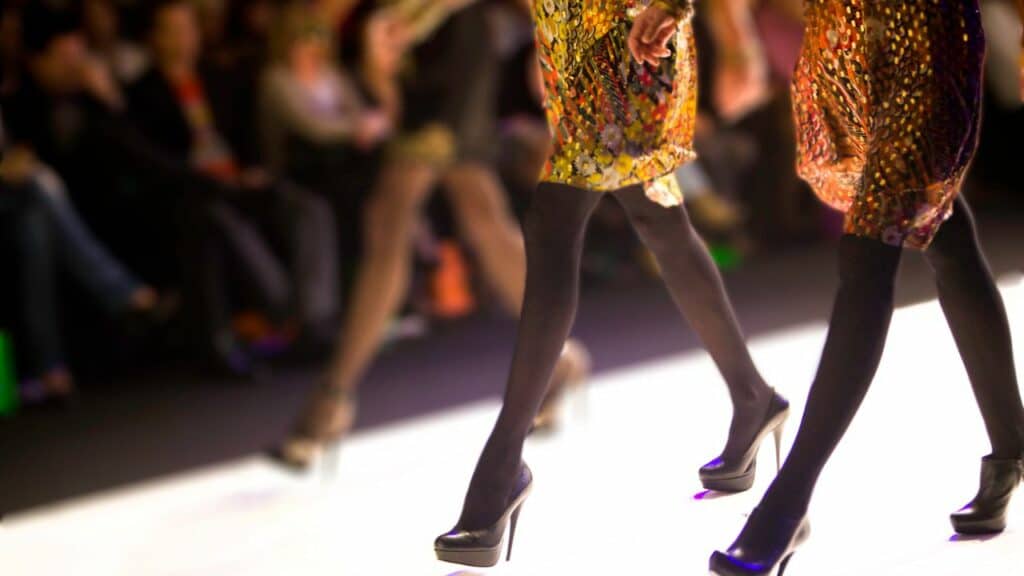
How Pre-Collections are Presented
The pre-collections, often presented between the main collections, take on a wide range of formats. From large-scale events that attract media attention, to more intimate presentations, a wide variety of approaches allow brands to create a moment of storytelling.
Pwe make, for example, the Maison Dior. Por the Cruise 2022 collection, he staged a grandiose and theatrical fashion show in the Panathinaiko Stadium in Athens, an event rich in historical and cultural references, and in 2025 he continued his world tour, choosing Scotland as the setting for the Cruise 2025 collection.
The atmospheric Drummond Castle, with its gardens transformed into a catwalk at sunset, welcomed models in tartan and ethereal muses wrapped in embroidered dresses between the sound of bagpipes and an aesthetic that combines strength and delicacy.
Gucciinstead, in 2024 flew to London for the parade Cruise 2025, where he brought spring to the concrete tanks of the Tate Modern.
On the other hand, brands such as The Row choose a more sober approach, presenting their pre-collections through lookbook in black and white with meticulous attention to detail and quality.

The Importance of Pre-Collections for Brands
Pre-collections are a fundamental part of the fashion business, often generating the bulk of a brand's annual sales. For example, Chanel has long recognised the importance of pre-collections, producing the famous 'Cruise' collection since 2000. These collections offer brands the opportunity to explore new themes and trends, while maintaining a constant flow of fresh products in shops.
The Impact of the Fashion Calendar on Designers
The relentless pace of the fashion calendar can be a significant source of stress for designers. This pressure has been highlighted by various industry professionals, including Raf Simonswho left his position as creative director of Dior citing 'excessive stress'.
Giorgio Armani also expressed similar concerns, writing an open letter in 2020 in which he called for a slowdown in the frenetic pace of the fashion industry.
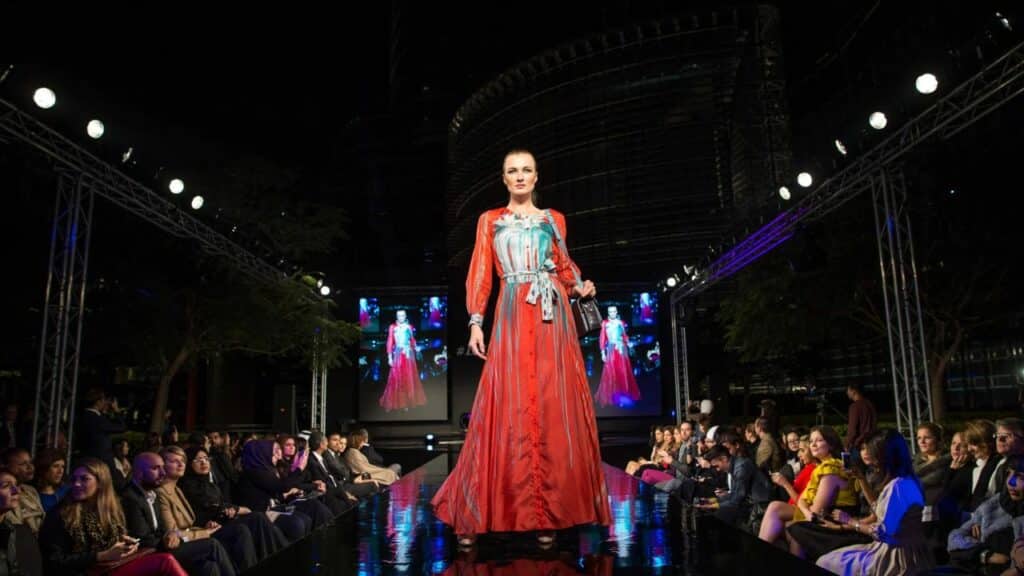
The Future Of The Fashion Calendar
The future of the fashion calendar is in constant question.
With the rise of the "see-now-buy-now and the growing influence of streetwear, brands are forced to reconsider their strategies.
Gucci, for example, decided to abandon the traditional fashion calendar to adopt a 'seasonless' approach, combining the men's and women's collections in one show.
Moreover, following the COVID-19 pandemic, many brands, including Saint Laurent, started to follow their own rhythm, breaking away from traditional fashion calendars.
Discover the Pre-collection to get inspired by
Le Pre-Collection 2025 offer a privileged look at the trends that will influence the coming seasons. From big brands to new voices in fashion, here are some of the most interesting collections to watch:
Dior - Between History and Innovation
Maria Grazia Chiuri continues the sartorial narrative with a collection that mixes romanticism and medieval references. Embroideries inspired by feminine art, structured bodices and puffed sleeves give life to a line rich in historical references and modern femininity.
Prada - Futurist Minimalism
Miuccia Prada and Raf Simons continue to explore the contrast between tradition and avant-garde. For Pre-Fall 2025, the brand focuses on essential yet innovative garments, with plays on textures and clean silhouettes that express a new idea of discreet luxury.
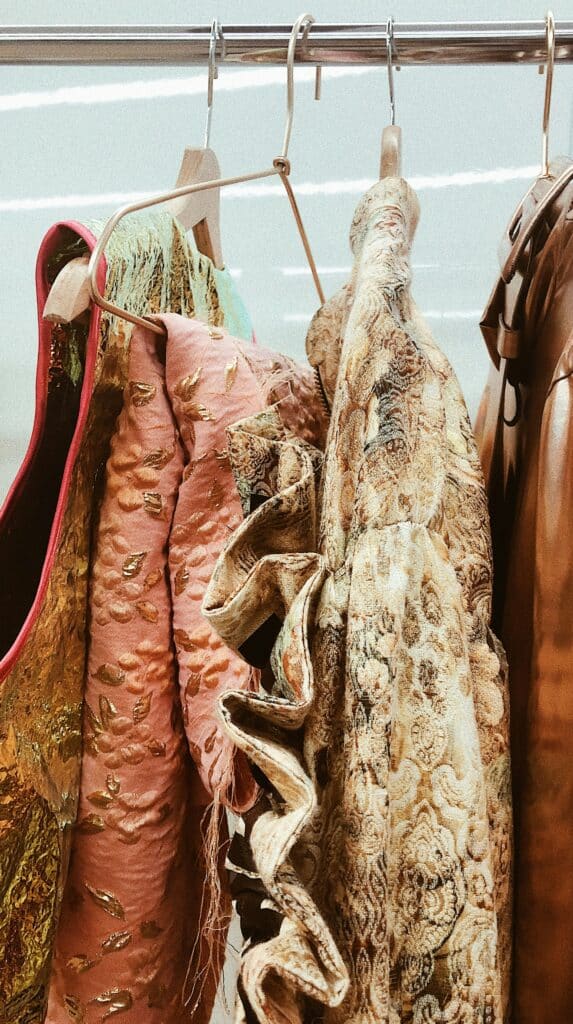
Valentine - The essence of romance
Pierpaolo Piccioli keeps the focus on timeless elegance with a collection that combines light fabrics, sophisticated draping and a refined palette. The result is a poetic yet extremely modern wardrobe.
For aspiring designers, looking at these collections means understanding how the brand interpret trends and how the market evolves. Studying the details, techniques and narratives behind each pre-collection can be a crucial exercise in developing one's own creative vision.
Louis Vuitton - Journey in Style
Nicolas Ghesquière draws on the retro-futurist aesthetic with a collection that enhances the concept of travel, a key element of the brand. Graphic prints, experimental volumes and statement accessories dominate the scene.
Bottega Veneta - Craftsmanship and modernity
Matthieu Blazy continues his redefinition of Italian craftsmanship with a collection that enhances the quality of materials and impeccable construction of garments. The result is a refined yet innovative line, perfect for the new conscious luxury.
For aspiring designers, looking at these collections means understand how brands interpret the trends and how the market evolves. Studying the details, techniques and narratives behind each pre-collection can be a crucial exercise in developing one's own creative vision.
Conclusions:
In short, pre-collections play a fundamental role in the fashion calendar, not only from a commercial point of view, but also as an expression of designers' creativity.
However, the fast pace of the fashion industry can lead to pressure and stress for designers.
As the industry adapts to new challenges, we may see a continuous evolution of the fashion calendar, with brands seeking ways to balance creative innovation with the well-being of their talents.
The fashion industry is a constantly changing industry, and the fashion calendar is a prime example of this.
An important consideration is how the sector will respond to pressure to slow down and become more sustainable.
As pointed out Giorgio Armani in his open letter, there is a growing need for 'reduce speed' and to focus on quality rather than quantity.
This could be a significant trend in the future of the fashion calendar, with brands looking to produce less but with greater attention to detail, durability and environmental impact.
In addition, the fashion industry could see an increase in customisation of the fashion calendar by individual brands.
As demonstrated by Gucci and Saint Laurent, there is the possibility of abandoning the traditional fashion calendar and to follow a rhythm that best aligns with one's own needs and vision.
In conclusion, while pre-collections are crucial for the financial health of brands and to maintain consumer interest, they can put significant pressure on designers.
The future of the fashion calendar could bring significant changes, with the industry adapting to become more flexible, sustainable and respectful of the welfare of its talents.
As always, the fashion industry will continue to evolve and redefine itself over time.
If you liked this article write me in the comments and share it!
See you anon!
Corrado.

